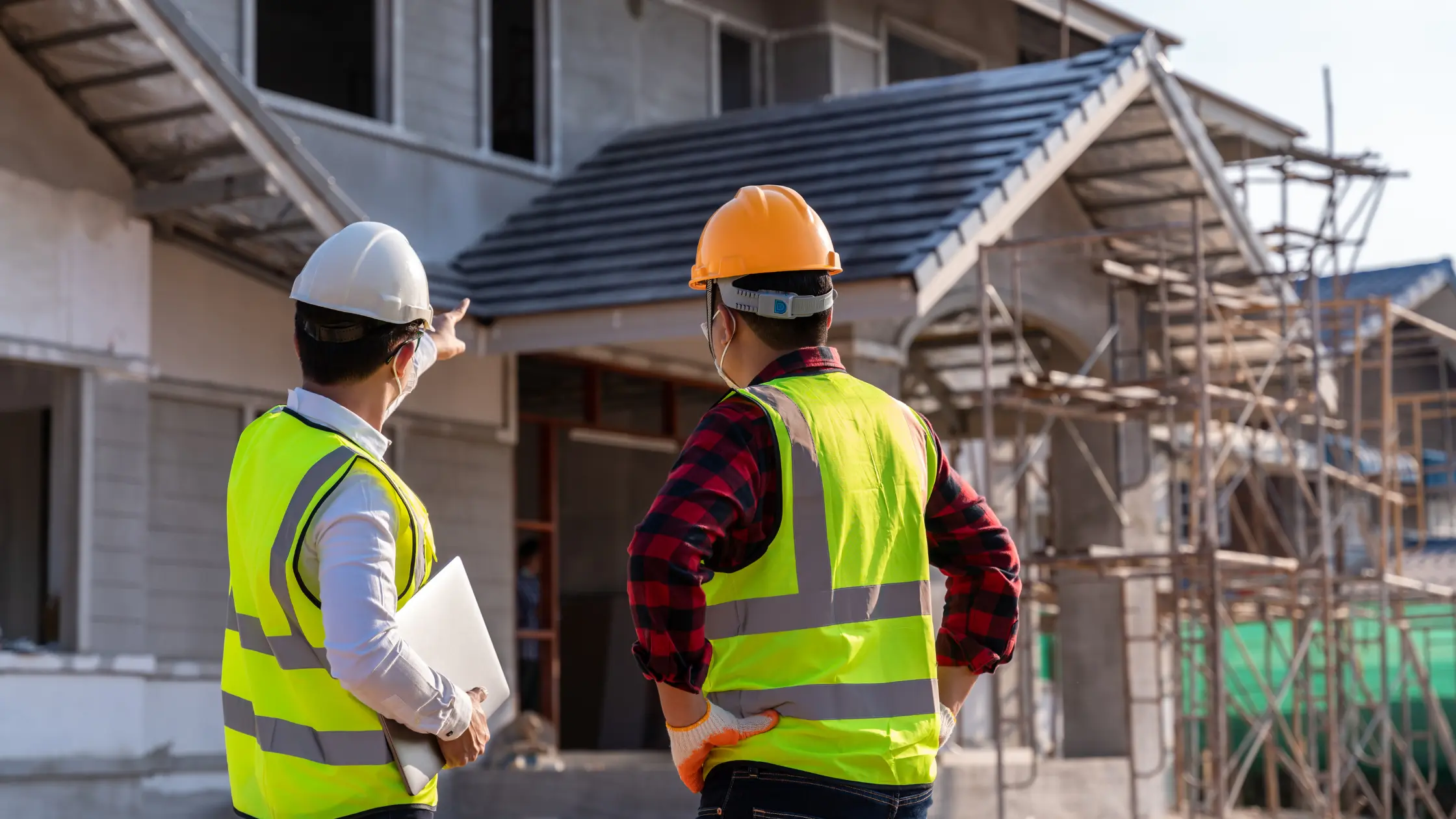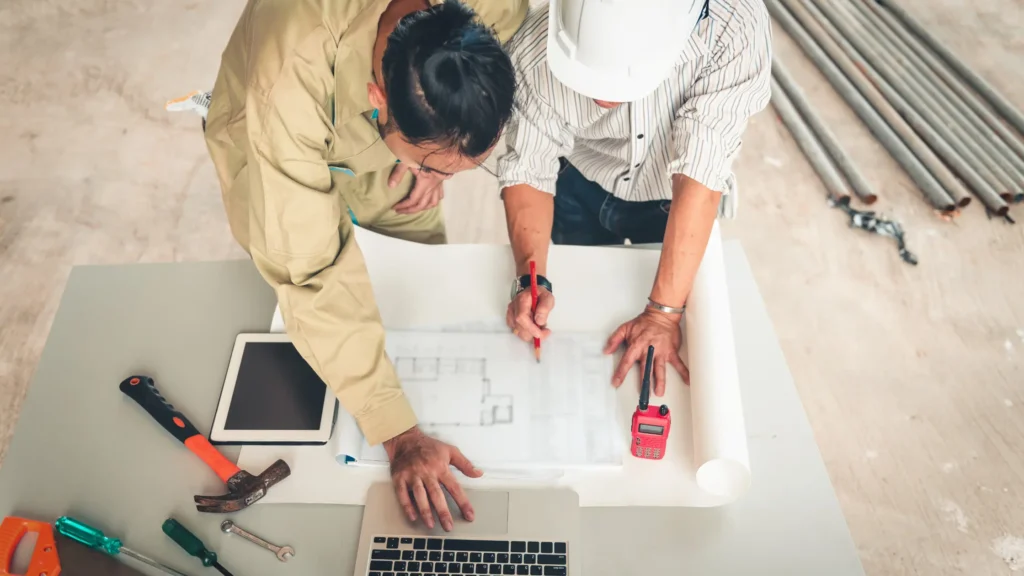How to create a budget to build a house? Get tips!

Building a house is a dream for many, but achieving this goal requires detailed financial planning.
Advertisements
Understanding how to budget for building a house is crucial to avoiding surprises and keeping your expenses under control.
In this comprehensive guide, we'll cover the steps to creating an effective budget, including how to forecast costs, where to save, and the items you can't forget.
Ready to learn everything about how to create the ideal budget?
Let's go!
++ How to protect your assets with insurance: find out here
1. Why is it Important to Plan the Construction Budget?

Setting a budget for building a home is essential to ensure you can move forward with the project from start to finish without financial disruption.
Planning your budget allows you to know exactly how much you can invest in each phase of construction, from the initial design to the finishing touches.
First, having a defined budget helps avoid problems with unplanned expenses, which can exceed your available limit.
Many construction projects end up stalled precisely due to a lack of financial planning.
A budget, when well-prepared, helps you focus on your real needs and what you can afford.
Furthermore, defining a detailed budget allows for greater control over expenses throughout the project.
With a clear list of expected expenses, you can quickly identify any variations that arise during the process and act strategically.
If there is a need to adjust any value, you will be able to clearly understand the impact on the rest of the project.
2. How to Start Budgeting: Defining the Project

To set a budget for building a house, the first step is to have a detailed architectural design.
Hiring an architect to design the plan and specify the materials that will be used is essential, as this directly influences costs.
In short, a well-designed project helps to accurately forecast expenses and facilitates execution.
In addition to the architectural design, it is important to have the support of an engineer.
In this sense, he will size the structure, calculating beams, pillars and the type of foundation required.
An engineer can also assess the terrain, which can directly impact costs, especially if it requires earthworks.
Another important point is to choose a construction style and finishes that are within your budget.
Homes with a more minimalist design, for example, tend to require fewer materials and simpler finishes, while sophisticated styles demand more investment.
This is a point that needs to be discussed before finalizing the initial budget.
++ Releasing money quickly today
3. Breaking Down Costs: Labor, Materials, and Services
A house construction budget is divided into three main parts: labor, materials, and services.
Understanding the cost of each of these elements helps you predict the total cost of the project more accurately.
Below, we detail each of these areas to make planning easier.
Labor
Labor is one of the most significant costs in the construction budget.
Therefore, it is recommended to research local values and define the type of contract.
In some regions, it is more common to hire a contractor, while in others, choosing independent professionals may be more advantageous.
Hiring professionals directly can reduce costs, but requires greater control over the stages of the project.
Furthermore, the cost of labor varies depending on the experience of the professionals and the type of service.
Below is a table that helps visualize the average labor cost in some regions of Brazil:
| Type of Service | Average Cost (R$) per m² | Observations |
|---|---|---|
| Foundation and Structure | R$ 200.00 – R$ 300.00 | Includes excavation and foundations |
| Masonry and Walls | R$ 100.00 – R$ 180.00 | It depends on the type of brick |
| Hydraulic Installation | R$ 80.00 – R$ 150.00 | Includes pipes and sewage |
| Electrical Installation | R$ 70.00 – R$ 130.00 | Wiring, sockets and switches |
| Finishes (flooring, painting) | R$ 120.00 – R$ 250.00 | More expensive materials increase the cost |
Budget to build a house: Building Materials
Building materials represent an important part of the budget.
It is advisable to obtain quotes from several stores and, if possible, negotiate discounts for bulk purchases.
It is important to include everything on the list: cement, sand, bricks, pipes, wires, among others.
Additionally, considering purchasing sustainable materials can help with long-term savings and project durability.
Another valuable tip is to define the quality standard of materials from the beginning.
Premium materials offer greater durability, but also increase the overall cost.
Below is a table with some average prices for construction materials:
++ How to Prepare Financially for a Baby: A Complete Guide for New Parents
| Material | Average Price (R$) per unit | Observations |
|---|---|---|
| Cement (50kg bag) | R$ 30.00 – R$ 50.00 | Price varies depending on brand |
| Sand (m³) | R$ 100.00 – R$ 150.00 | There may be variation by region |
| Brick | R$ 0.80 – R$ 1.50 | Ecological bricks are more expensive |
| PVC pipes | R$ 5.00 – R$ 15.00 | For hydraulic and electrical installations |
| Electrical wiring (meter) | R$ 2.00 – R$ 6.00 | Thicker threads are more expensive |
Budget for building a house: Additional Services
In addition to labor and materials, there are costs for specific services, such as earthmoving, site preparation, and safety inspections.
These services are necessary to ensure that the construction complies with current regulations.
Depending on the terrain, it may be necessary to hire an excavation service, which varies according to the topography of the location.
Another service to consider is the installation of sewage and electricity systems, especially in more remote areas.
These values need to be included from the beginning to avoid compromising the budget at the end of the project.
4. How to Save on the Construction Budget?
To save money on building a house, some strategies can be adopted.
The first tip is to avoid wasting materials as much as possible.
To achieve this, buy only what you need and maintain strict inventory control. Accurate inventory can significantly reduce costs.
Another way to save money is to choose more affordable materials without sacrificing quality.
Researching suppliers and even considering alternative materials can make a positive difference in your budget.
Using recycled or second-rate materials for certain areas of construction, such as garage floors, can result in considerable savings.
Negotiating prices for materials and labor is also a valid strategy.
Many hardware stores offer discounts for cash or bulk purchases.
Talk to the supplier to find better conditions and don't be afraid to negotiate until you get the best possible price.
++ Complete guide to buying a property: from research to negotiation
5. How to Control the Budget During Construction?
Even with a planned budget, it's important to closely monitor your spending to ensure you stick to your budget.
To do this, a good tip is to create a spending control spreadsheet, detailing all the steps and actual costs, and comparing them with the initial budget.
This practice helps identify deviations and make decisions before the problem worsens.
Establishing a payment schedule can also help with financial control.
Determine payment dates for each step, such as foundation, masonry, installation, and finishing.
This also makes it easier to monitor costs and prevents you from committing financially to unexpected amounts.
Finally, creating a financial reserve is essential.
Even if you have a planned budget, unforeseen events are common in construction projects and may require additional expenditure.
With a reserve, you'll be prepared to deal with any setbacks without compromising the completion of the project.
Budget to build a house: Conclusion
Preparing a budget to build a house is a process that requires research, planning and control.
With a well-structured project and adequate financial monitoring, it's possible to build your dream home without any surprises along the way.
Remember to consider all aspects: choosing materials, hiring professionals, comparing prices, and establishing a financial reserve.
Having clarity about the budget and the stages of the project will bring peace of mind and security throughout the process.
In short, use this guide as a reference and start planning your new home on the right foot!
++ 7 steps to make a financial plan for the end of year holidays
